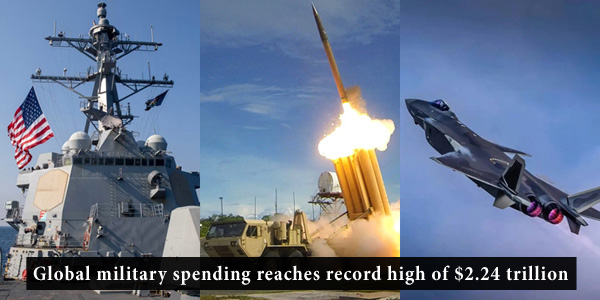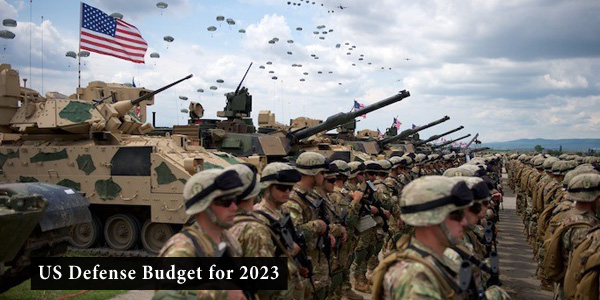Top 10 Military Tech and Robotics Companies in the World
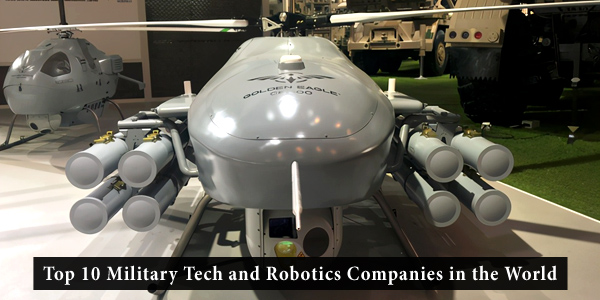
In recent years, military robotics technology has revolutionized warfare with new defense, combat, and surveillance tools. From unmanned aerial vehicles to ground robots, these modern machines are changing the battlefield approach. The use of military robots has grown significantly recently, with the revenue of the military robotics industries expected to reach $225.6 billion by 2030. With the increased demand and fierce competition, several companies are emerging as leaders in developing advanced technologies for military and security purposes. This article explores some of the top military robotics companies recognized for their creative designs and contributions to defense operations.
|
Top Robotics Companies |
Country |
Revenue in 2022 |
1. |
Lockheed Martin |
United States |
$66 billion |
| 2. | China North Industries Group Corporation (NORINCO) |
China |
$71 billion |
| 3. | General Dynamics Corporation |
United States |
$39.4 billion |
| 4. | Northrop Grumman Corporation |
United States |
$36.6 billion |
| 5. | China Aerospace Science and Technology Corporation (CASC) |
China |
$38.7 billion |
| 6. | BAE Systems |
United Kingdom |
$26.29 billion |
| 7. | Thales Group |
France |
$19.45 billion |
| 8. | FLIR Systems Inc |
United States |
$2 billion |
| 9. | Qinetiq |
United Kingdom |
$1.73 billion |
| 10. | AeroVironment |
United States |
$445.7 million |
1. Lockheed Martin is a U.S.-based defense giant. As one of the world’s largest defense contractors, they build an array of products and provide services from military aircraft to missiles and cybersecurity to space exploration. In 2022, Lockheed Martin recorded $66 billion in revenue. The American defense firm is increasingly focused on developing a selection of robotics and advanced technological products.
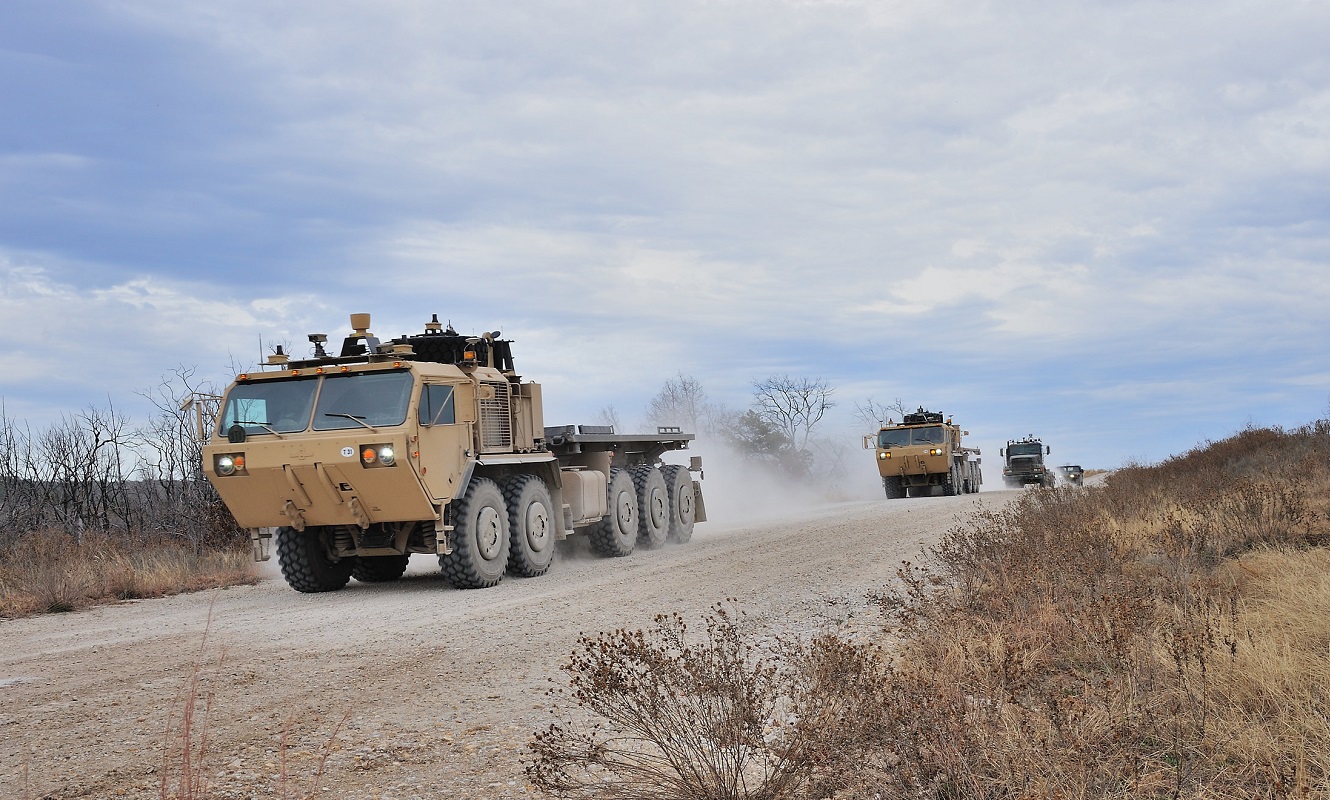 U.S. Army trucks equipped with Lockheed Martin's AMAS technology undergo an autonomous driving test at Fort Hood, Texas. (Image Credit: Lockheed Martin)
U.S. Army trucks equipped with Lockheed Martin's AMAS technology undergo an autonomous driving test at Fort Hood, Texas. (Image Credit: Lockheed Martin)
With a long history of collaboration with the U.S. government on defense projects and a reputation for pioneering and technologically advanced solutions, the company is a global leader in providing cutting-edge technology solutions and services to government and commercial clients worldwide.
Some of its most significant defense technology products are listed below:
• Autonomous Mobility Applique System (AMAS) is a kit that enables any military vehicle to operate without human input by using various sensors such as Light Detection and Ranging (LIDAR), Radio Detection and Ranging (RADAR), and cameras. It also includes a computer system that processes data for autonomous navigation. Through successful testing on a variety of vehicles and deployment in operational settings, AMAS has proven to help reduce the need for drivers while also enhancing convoy safety and efficiency.
• Indago Quadrotor is a small unmanned aerial system that can be used for surveillance and reconnaissance. It is designed for both military and commercial use. The Indago quadrotor has a compact size, long endurance, and high-resolution imaging capabilities, making it an ideal tool for a variety of applications.
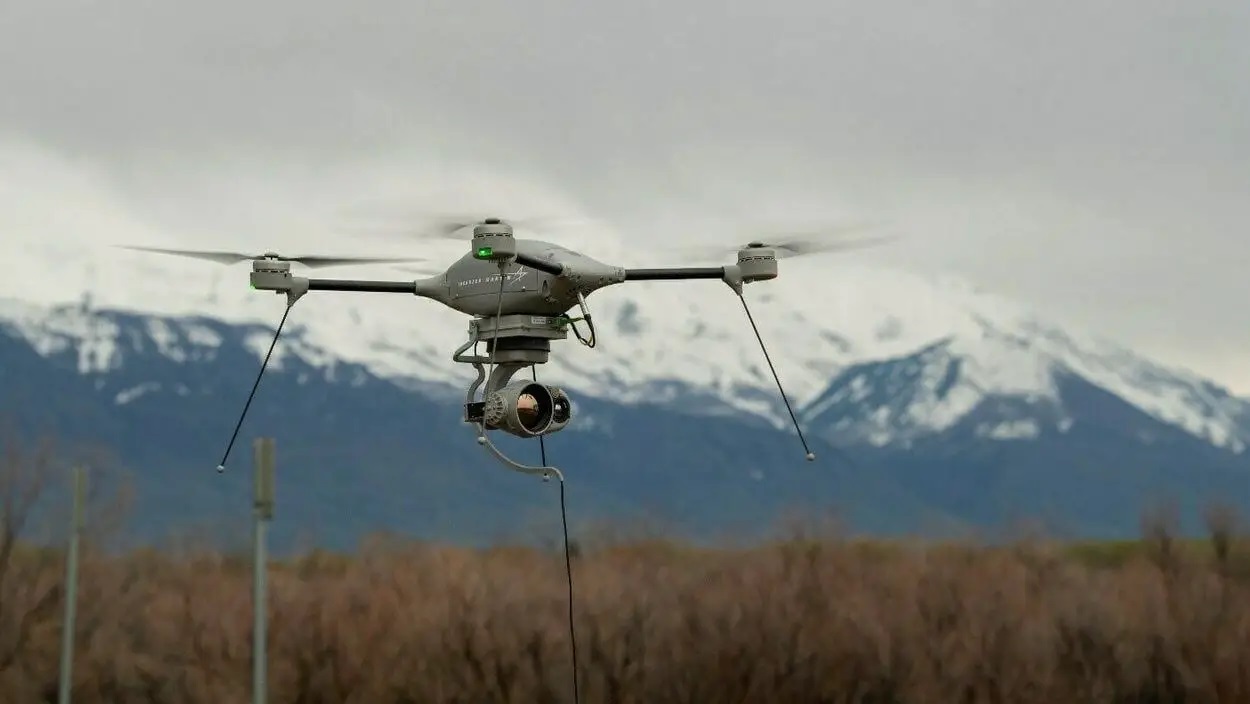 Lockheed Martin’s Indago 3 is a military-grade, all-weather, group 1 quadrotor unmanned aircraft system. (Image Credit: Lockheed Martin)
Lockheed Martin’s Indago 3 is a military-grade, all-weather, group 1 quadrotor unmanned aircraft system. (Image Credit: Lockheed Martin)
• SPIDER (Self-Propelled Instrument for Damage Evaluation and Repair) is a robotic system used to inspect and repair aircraft. It is designed to crawl on the surface of aircraft and inspect for any signs of damage or corrosion. SPIDER can perform non-destructive testing and repair small cracks, reducing maintenance costs and downtime.
• ATHENA (Advanced Test High Energy Asset) is a high-energy laser weapon system used for defense against drones and other airborne threats. It uses a high-energy laser to destroy targets with pinpoint accuracy. The system is designed to be mobile and can be integrated with various platforms, including ground vehicles and aircraft.
• Vector Hawk is an unmanned aerial vehicle (UAV), designed for military and civilian applications, including intelligence, surveillance, and reconnaissance. Vector Hawk has a modular design and can be easily customized for different mission requirements, making it a versatile and flexible drone platform.
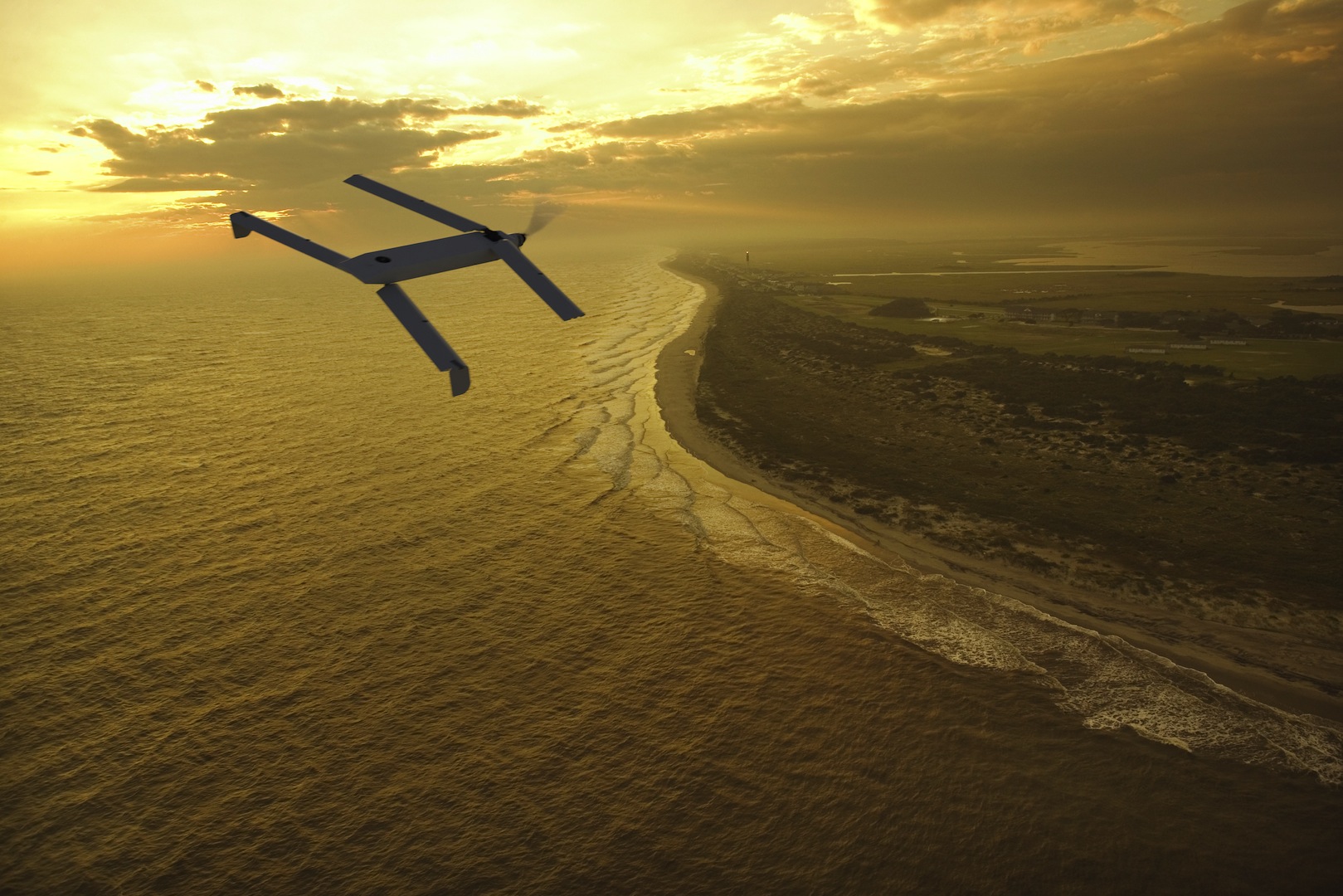 Lockheed Martin’s canister-launched Vector Hawk small unmanned aerial vehicle. (Image Credit: Lockheed Martin)
Lockheed Martin’s canister-launched Vector Hawk small unmanned aerial vehicle. (Image Credit: Lockheed Martin)
• VCSi (Video Control Station-Interactive) is a software suite developed by Lockheed Martin for controlling and managing unmanned systems. It provides a user-friendly interface that enables operators to control multiple unmanned systems simultaneously and receive real-time data and video feeds. VCSi is used by military and government agencies around the world for various applications including border surveillance, disaster relief, and environmental monitoring.
• Fortis exoskeleton is a wearable robotic suit that provides fresh strength and abidance to wear and tear. The FORTIS has been designed to enhance worker safety and alleviate fatigue when performing physically demanding tasks such as lifting heavy tools or crawling in confined spaces. It is a lightweight, unpowered device that utilizes joints at the hips, knees, and ankles to transfer the weight of heavy loads directly from the operator’s body to the ground. This results in increased strength and endurance for the operator as well as reduced threat of injury and fatigue.
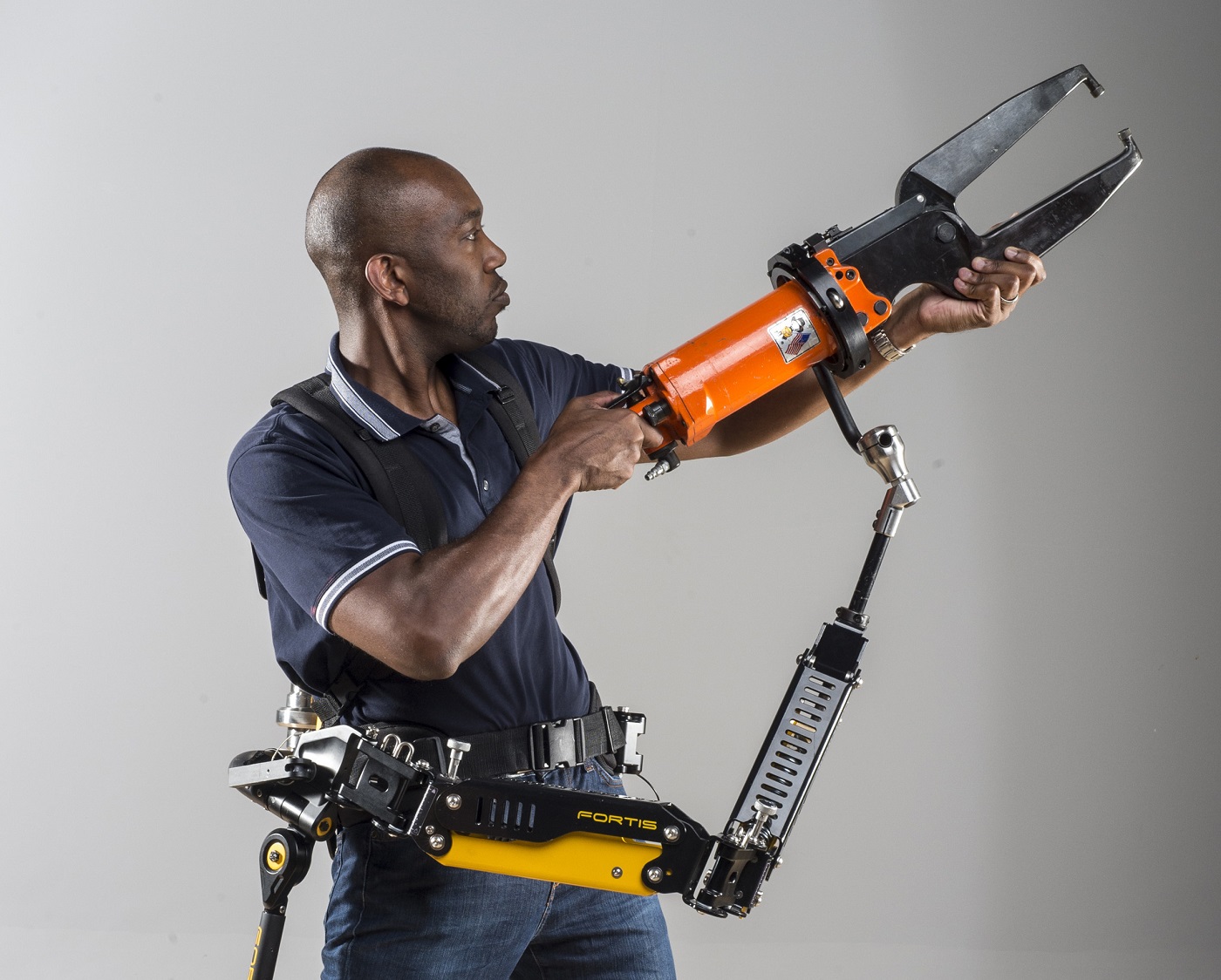 Lockheed Martin’s FORTIS Tool Arm, the key component of its industrial exoskeleton. (Image Credit: Lockheed Martin)
Lockheed Martin’s FORTIS Tool Arm, the key component of its industrial exoskeleton. (Image Credit: Lockheed Martin)
2. China North Industries Group Corporation (NORINCO) NORINCO is a Chinese company that specializes in defense technology and produces a range of military robotics systems, including unmanned aerial vehicles (UAVs), unmanned ground vehicles (UGVs), and unmanned surface vehicles (USVs). NORINCO’s military robotic systems are widely used by China's People's Liberation Army (PLA). NORINCO was founded in 1980 as a state-owned company focused on defense technology. NORINCO specializes in defense technology, particularly developing and producing advanced military systems. In 2022, NORINCO recorded $71 billion in revenue.
NORINCO is one of the largest defense contractors in China, and it is known for its wide range of military products, including armored vehicles, artillery systems, and military robotics. The company has also been involved in several high-profile international arms deals, including the sale of military equipment to countries in Africa and the Middle East. Some of NORINCO's military products in these categories include:
• Robotic Systems: NORINCO develops a range of unmanned systems, including aerial drones, ground vehicles, and underwater systems. One of its most well-known products is the Sharp Claw unmanned ground vehicle, which is used for reconnaissance, surveillance, and target acquisition.
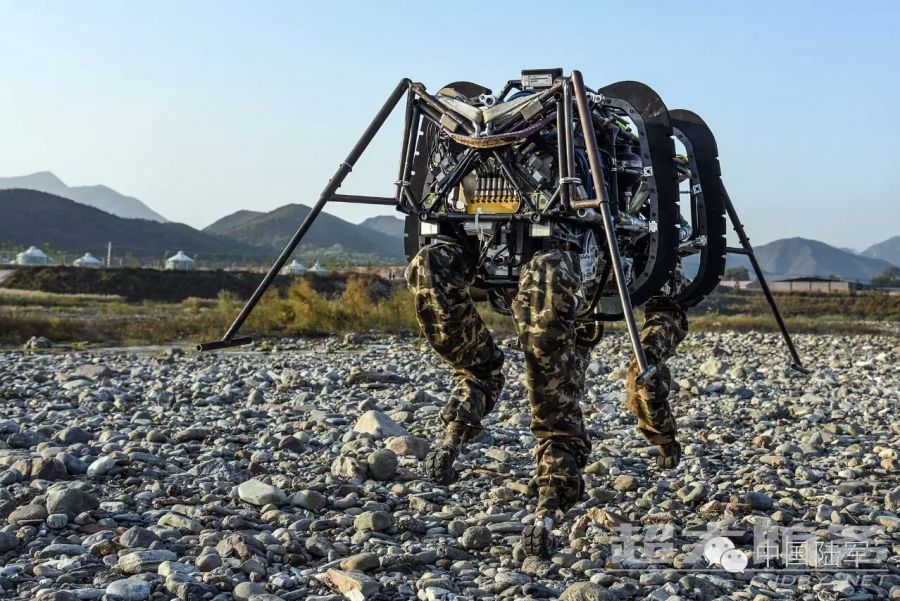 China’s top defense manufacturer Norinco’s quadruped robotic mule. (Image Credit: NORINCO)
China’s top defense manufacturer Norinco’s quadruped robotic mule. (Image Credit: NORINCO)
• Unmanned Aerial Vehicles (UAVs): NORINCO produces several types of UAVs, including the ASN series of fixed-wing drones, the Sky Saker vertical take-off and landing (VTOL) drone, and the CH series of helicopter drones. These drones are used for various military applications, including surveillance, reconnaissance, and target acquisition.
• Unmanned Underwater Vehicles (UUVs): NORINCO produces several types of UUVs, including the Sea Serpent series and the Thunder series. These UUVs are used for underwater reconnaissance, mine detection, and other military applications.
• Advanced Technology: NORINCO is also involved in the development and production of advanced military technologies, including high-energy lasers, electromagnetic guns, and other cutting-edge weapons systems. These technologies are aimed at improving the effectiveness of China's military capabilities in various domains.
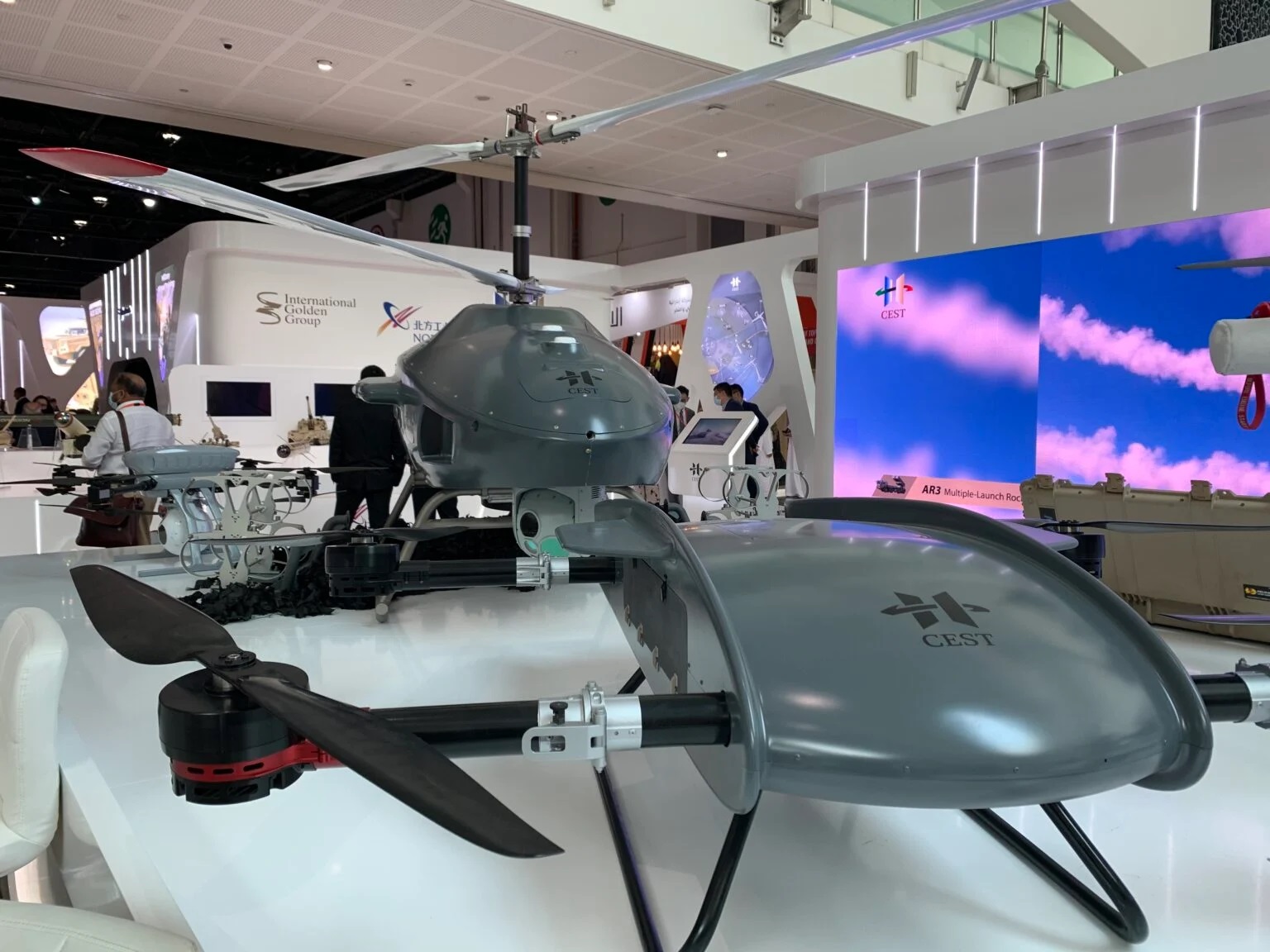 The CR500 and MR40 Chinese UAVs at the China-Emirates Science and Technology Innovation Laboratory stand at IDEX 2021. (Image Credit: BreakingDefense)
The CR500 and MR40 Chinese UAVs at the China-Emirates Science and Technology Innovation Laboratory stand at IDEX 2021. (Image Credit: BreakingDefense)
3. General Dynamics is a global aerospace and defense company headquartered in Virginia, United States. It was founded in 1952 and has since grown to become one of the largest defense contractors in the world, supplying products and services to the aerospace, land, and marine industries. General Dynamics’s operating income for the full year 2022 was approximately $39.4 billion. The company operates in more than 40 countries and employs more than 100,000 people worldwide.
Overall, General Dynamics is a leading global aerospace and defense company with a diverse portfolio of products and services. The company’s focus on research and development has enabled it to remain competitive in the ever-evolving defense and aerospace industries. Some of its notable products in this category include:
• Bluefin-9 is a lightweight, man-portable unmanned underwater vehicle (UUV) designed for shallow-water operations. It can be deployed from shore or small boats and is used for mine countermeasures, search and rescue, and environmental monitoring applications.
• Multi-Utility Tactical Transport (MUTT) is a small, all-terrain unmanned ground vehicle (UGV) designed to support dismounted troops in various environments. It can carry supplies and equipment, perform reconnaissance and surveillance, and provide fire support.
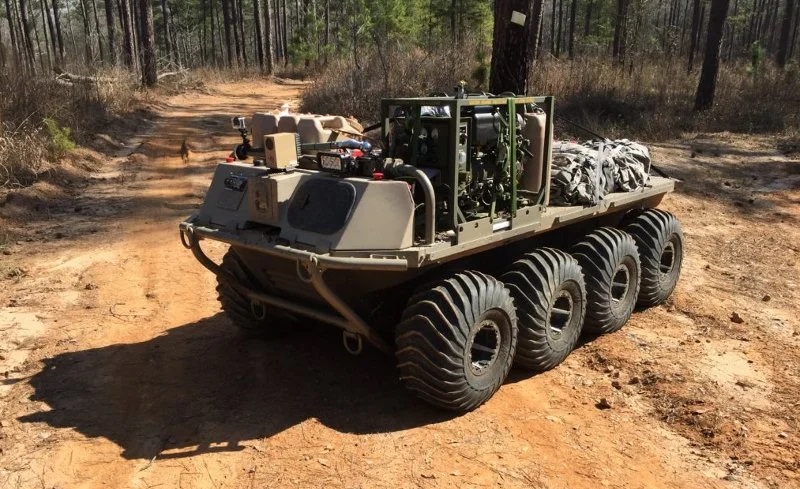 The Multi-Utility Tactical Transport unmanned ground vehicle. Image Credit: General Dynamics UK)
The Multi-Utility Tactical Transport unmanned ground vehicle. Image Credit: General Dynamics UK)
• Stryker is a series of eight-wheeled armored vehicles equipped with various weapons and sensors. The Stryker family includes several variants, including the Stryker Remote Weapons Station (RWS), which allows for the remote operation of the vehicle’s weapons.
• TACLANE-Nano is a small, lightweight, and portable encryption device that enables secure communication for unmanned systems in the field.
• Knifefish is an autonomous underwater vehicle (AUV) designed to detect and classify underwater mines. It operates in the open ocean and littoral zones and can be launched from a variety of platforms.
4. Northrop Grumman is an American global aerospace and defense technology company that designs, develops, and delivers products, systems, and solutions in military, space, and intelligence domains. It was founded in 1939 by Jack Northrop and is headquartered in Falls Church, Virginia, United States. The company has over 90,000 employees worldwide and its total revenue was $36.6 billion as of 2022.
Northrop Grumman operates in four main business segments: Aerospace Systems, Mission Systems, Defense Systems, and Space Systems. Northrop Grumman Corporation is known for its advanced robotics, unmanned systems, and next-generation technologies. Here are a few examples of the company’s products in each of these areas:
• Autonomous Systems: Northrop Grumman has a range of autonomous systems that include unmanned aerial vehicles (UAVs), unmanned ground vehicles (UGVs), and unmanned underwater vehicles (UUVs).
• Space Robotics: The company has developed space robotics for missions that require precision and reliability. These include robotic arms for satellites and space probes.
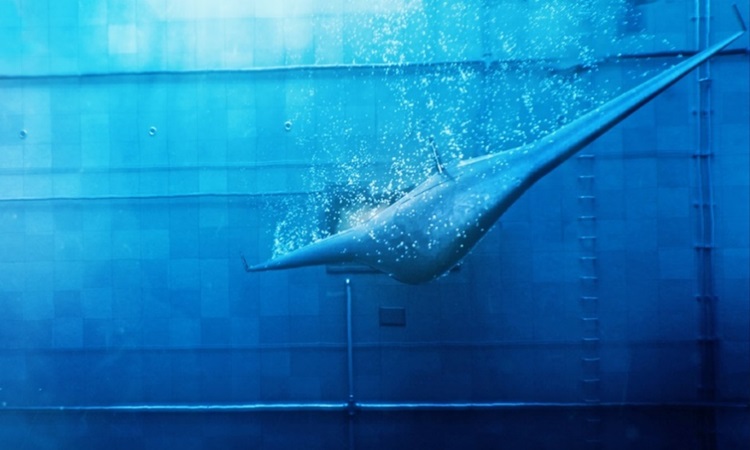 Artist’s concept of Northrop Grumman’s unmanned underwater vehicle, Manta Ray. (Image Credit: Northrop Grumman)
Artist’s concept of Northrop Grumman’s unmanned underwater vehicle, Manta Ray. (Image Credit: Northrop Grumman)
• Underwater Robotics: Northrop Grumman has developed underwater robotics for various purposes, such as ocean exploration and mapping, mine detection, and underwater salvage.
• Unmanned Systems Integration Center: This is a facility where Northrop Grumman integrates and tests unmanned systems and sensors.
Northrop Grumman Corporation has established itself as a leader in the field of advanced technology and innovation, and its products and solutions have been deployed by military and security forces around the world. With its focus on developing cutting-edge technology, the company continues to play a significant role in shaping the future of aerospace and defense technology.
Some examples of next-generation tech-type products are:
• Directed Energy: Northrop Grumman has developed high-energy laser systems that can be used for defense at sea, land, and air. These high-energy laser solutions include Counter Unmanned Aerial Systems (C-UAS), Counter Rockets, Artillery and Mortar (C-RAM) and Counter Missile Systems. Northrop Grumman’s directed energy solutions can detect, track, target, and destroy hostile targets with a combination of high power density, accuracy, and agility.
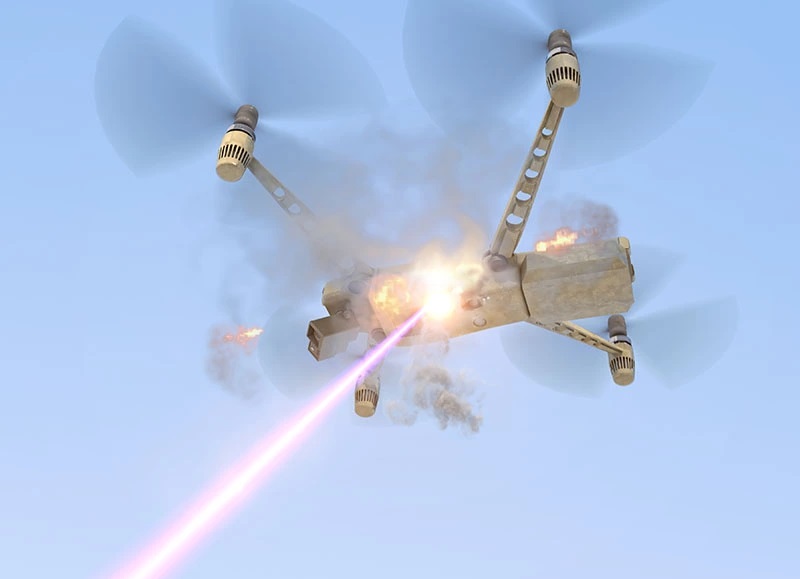 Counter Unmanned Aerial Systems (C-UAS). (Image Credit: Northrop Grumman)
Counter Unmanned Aerial Systems (C-UAS). (Image Credit: Northrop Grumman)
• Cybersecurity: The company has a range of cybersecurity products and services that protect against cyber threats, including intrusion detection and prevention, network security, and encryption.
• Quantum Computing: Northrop Grumman is working on developing quantum computing technologies that could provide significant advantages in areas such as cryptography, materials science, and optimization.
• Hypersonic Weapons: Northrop Grumman is developing hypersonic weapons and vehicles that can travel at extremely high speeds and evade enemy defenses. These could have a significant impact on future military operations. The hypersonic missiles have scramjet engines that enable speeds greater than Mach 5 and increased maneuverability. It offers more capability in smaller form factor missiles which means platforms can carry more weapons in less space. The U.S. defense firm is building a hypersonics capability center at its Elkton facility in Maryland that will provide full lifecycle production for hypersonics, from design to production and integration.
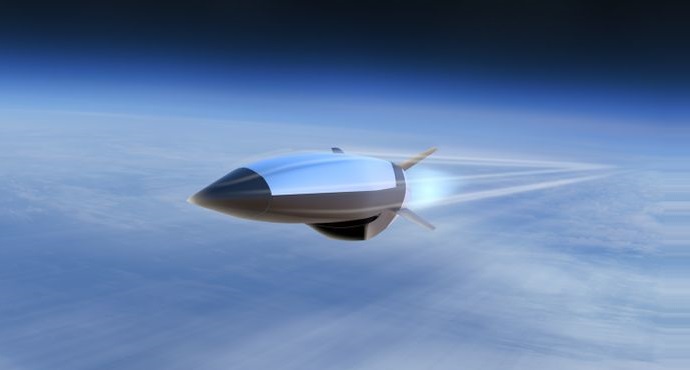 Artist Rendering of Northrop Grumman’s scramjet engine for the Hypersonic Attack Cruise Missile. (Image Credit: Northrop Grumman contractor derived image)
Artist Rendering of Northrop Grumman’s scramjet engine for the Hypersonic Attack Cruise Missile. (Image Credit: Northrop Grumman contractor derived image)
5. China Aerospace Science and Technology Corporation (CASC) CASC is a state-owned company that focuses on the development and production of aerospace technology and defense products. The company has a range of military robotic systems, including UAVs, UUVs, and UGVs. The defense firm’s military robotic systems are widely used by the PLA.
CASC was founded in 1999 as a state-owned company specializing in aerospace technology and defense products, particularly the development of advanced missile systems, satellite technology, and military robotics. It is one of the largest aerospace companies in China, which has also been involved in several high-profile space missions, including China’s first manned space mission in 2003. In 2022, CASC recorded $38.7 billion in revenue. Some of CASC’s military products in different categories include:
• Robotic Systems: CASC produces a range of unmanned systems, including aerial drones, ground vehicles, and underwater systems. One of its most well-known products is the Tianyi series of UAVs, which are used for reconnaissance, surveillance, and target acquisition.
• Unmanned Aerial Vehicles: CASC produces several types of UAVs, including the Rainbow series of fixed-wing drones, the CH series of helicopter drones, and the Divine Eagle high-altitude, long-endurance drone. These drones are used for a variety of military applications, including surveillance, reconnaissance, and target acquisition.
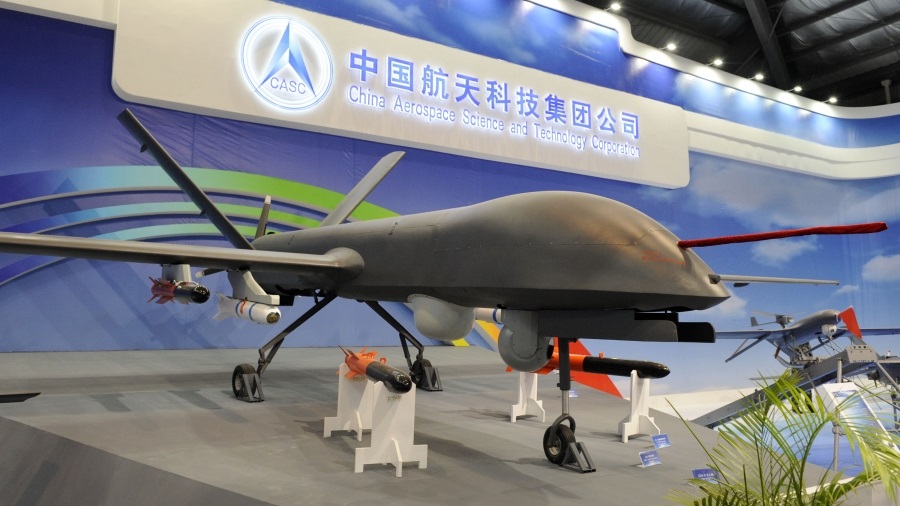 Caihong drone made by China Aerospace Science and Technology Corp. (Image Credit: CASC)
Caihong drone made by China Aerospace Science and Technology Corp. (Image Credit: CASC)
• Unmanned Underwater Vehicles: CASC produces several types of UUVs, including the Qianlong series and the Haiyi series. These UUVs are used for underwater reconnaissance, mine detection, and other military applications.
• Advanced Technology: CASC is also involved in the development and production of advanced military technologies, including missile systems, satellite technology, and other cutting-edge weapons systems. These technologies are aimed at improving the effectiveness of China’s military capabilities in various domains.
6. BAE Systems is a British transnational company that specializes in advanced technology defense, aerospace, and security results. The company is based in several countries worldwide, including the UK, the U.S., Australia, Saudi Arabia, and India. BAE employs over 85,000 people worldwide and reported a total profit of $26.294 billion in 2022.
BAE Systems is a leading developer of robotics, unmanned, and next-generation tech-type products for military and civilian applications. Its products are designed to improve safety, performance, and efficiency in a range of challenging environments, and provide advanced solutions for defense and security challenges. BAE Systems is known for its expertise in advanced technology, particularly in the areas of electronic warfare, cybersecurity, and artificial intelligence.
Some of BAE Systems’ notable products in this area include:
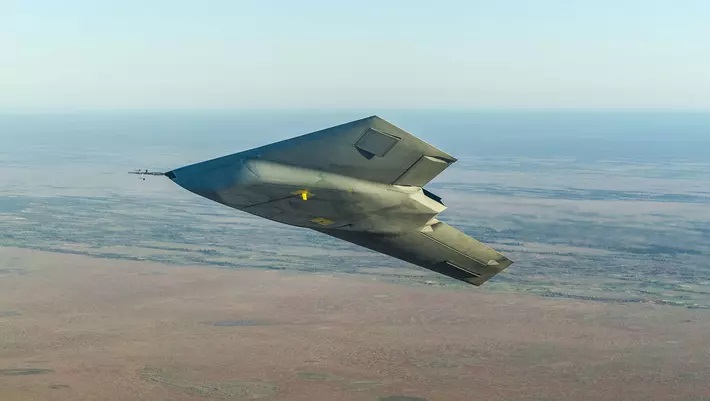 Taranis is an unmanned combat aircraft system advanced technology demonstrator programme. (Image Credit: BAE Systems)
Taranis is an unmanned combat aircraft system advanced technology demonstrator programme. (Image Credit: BAE Systems)
• MANTIS Unmanned Ground Vehicle (UGV) is a fully autonomous UGV developed by BAE Systems that can navigate complex terrain and perform a range of tasks, such as reconnaissance, surveillance, and logistics support. It is equipped with advanced sensors and software that enable it to operate in challenging environments and can be controlled remotely or operate independently.
• Taranis Unmanned Combat Aerial Vehicle (UCAV) is a stealthy UCAV developed by BAE Systems in collaboration with the UK Ministry of Defense. It is designed to carry out long-range, autonomous missions, including air-to-ground and air-to-air combat. The Taranis UCAV features advanced stealth technology, a high degree of autonomy, and a range of advanced sensors and weapons.
• MAGMA UAV is an experimental unmanned aerial vehicle (UAV) developed by BAE Systems in collaboration with the University of Manchester. It is designed to test a range of new technologies, including wing morphing, and autonomous flight control. The MAGMA UAV is capable of changing its wing shape during flight, which can improve its performance and efficiency.
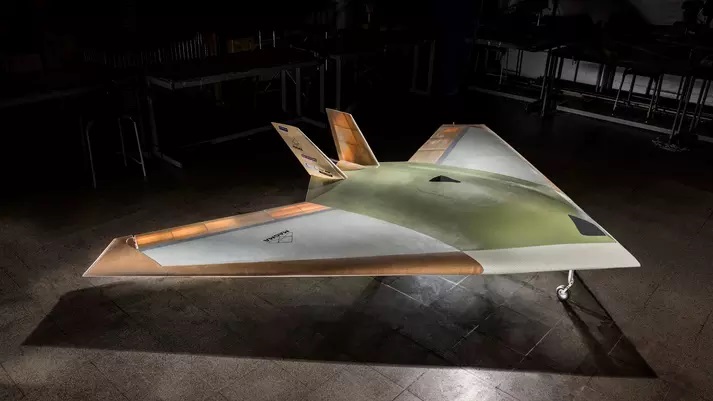 BAE systems MAGMA stealth unmanned aerial vehicle. (Image Credit: BAE Systems)
BAE systems MAGMA stealth unmanned aerial vehicle. (Image Credit: BAE Systems)
• Broadsword Spine is a modular unmanned ground vehicle (UGV) system developed by BAE Systems. It is designed to provide flexible and scalable solutions for a range of applications, including logistics support, reconnaissance, and surveillance. The system consists of a range of modules that can be configured to meet specific requirements.
• Q-Warrior is a wearable augmented reality system developed by BAE Systems. It provides soldiers with real-time information and situational awareness in the field, including live video feeds, maps, and mission data. The system is designed to improve situational awareness, decision-making, and safety for soldiers in challenging environments.
7. Thales Group is a France-based multinational company specializing in advanced technology solutions and services for various industries, including defense, aerospace, transportation, security, and digital identity and security. It was founded in 1893 as a telegraph company and became a major player in the technology industry. Thales operates in more than 60 countries worldwide and employs approximately 80,000 people worldwide.
In terms of revenue, Thales generated revenue of $19.45 billion in 2022, most of which came from defense and space contracts. With a strong focus on advanced solutions for the defense, aerospace, transportation, and security sectors, the firm’s global presence and expertise in a wide range of technologies make it a key partner for governments and businesses around the world.
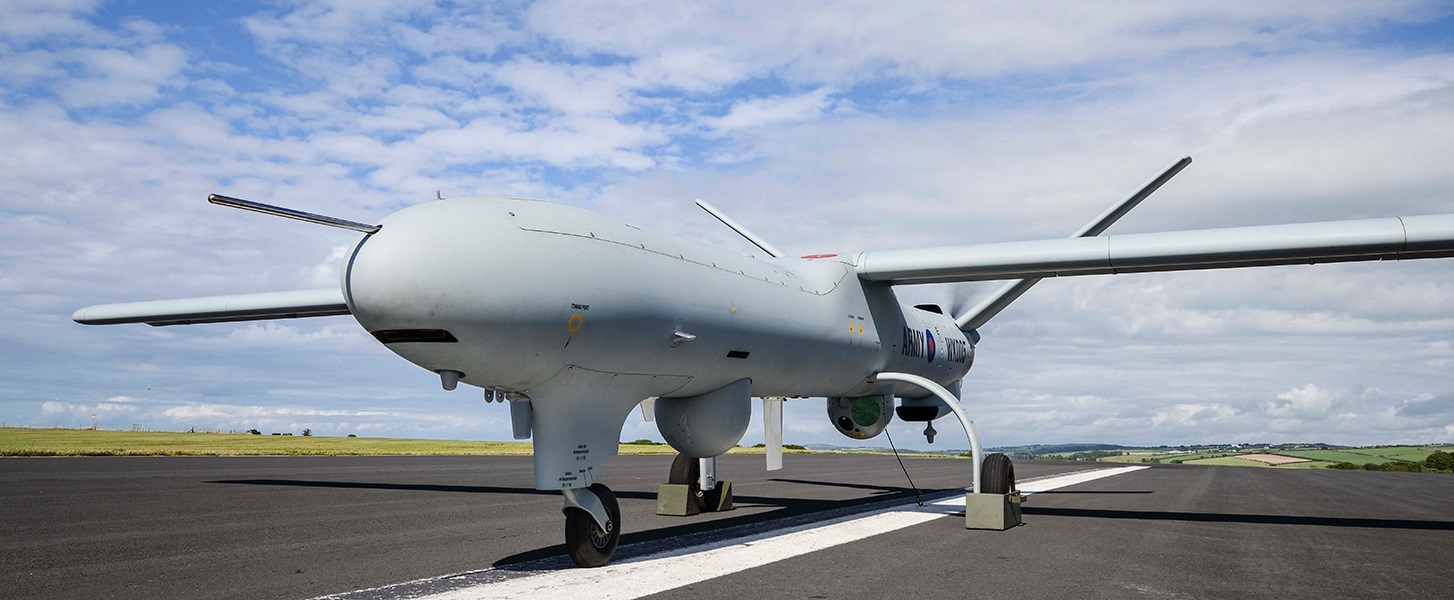 Thales Group’s Watchkeeper X unmanned aerial vehicle. (Image Credit: Thales)
Thales Group’s Watchkeeper X unmanned aerial vehicle. (Image Credit: Thales)
Some of the prominent products of the Thales Group:
• Watchkeeper WK450 is an unmanned aerial vehicle (UAV) developed by Thales for intelligence, surveillance, and reconnaissance (ISR) missions. It is used by the British Army and was deployed in Afghanistan.
• Fulmar X is a small UAV aimed for navigational guidance and surveillance. It has a range of over 15 hours and can be exercised for both martial and mercenary operations, similar to hunt and deliverance missions.
• SPY’Ranger is a lightweight and portable UAV system designed for a wide range of missions including tactical reconnaissance and surveillance. The mini UAV system can be launched and operated by one person, making it ideal for use in remote or hard-to-reach areas.
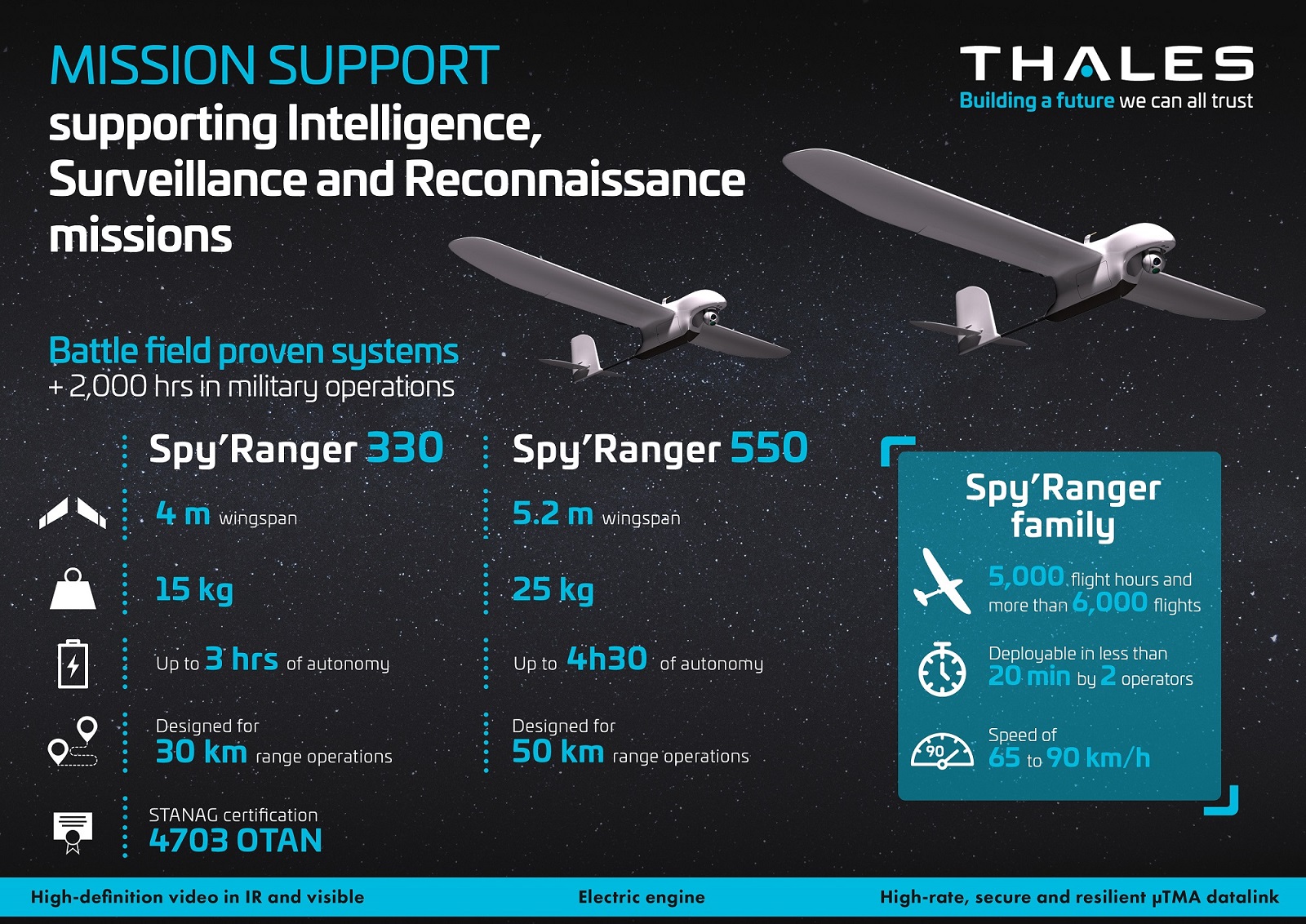 Thales Group's Spy'Ranger 330 and the Spy'Ranger 550 UAV systems. (Image Credit: Thales)
Thales Group's Spy'Ranger 330 and the Spy'Ranger 550 UAV systems. (Image Credit: Thales)
• SeaFire is an autonomous surface vessel (ASV) designed for naval operations, including mine countermeasures, surveillance, and maritime security. It can operate for up to 24 hours at a time and is equipped with advanced sensors and communication systems.
• Cybels Analytics is a next-generation cybersecurity solution that utilizes machine learning and artificial intelligence to detect and respond to cyber threats in real time. It is used by organizations in defense, finance, and healthcare sectors.
• 3D Holographic Head-Up Display (HUD) is a next-generation display system that utilizes augmented reality technology to provide pilots with critical information, such as flight data and target information, in real time. It is currently being used in military aircraft, such as the Rafale fighter jet.
• Urban Solution is a suite of next-generation technologies designed to improve public safety and security in urban environments. It includes advanced sensors, analytics, and communication systems that can be used to detect and respond to security threats, such as terrorism and crime.
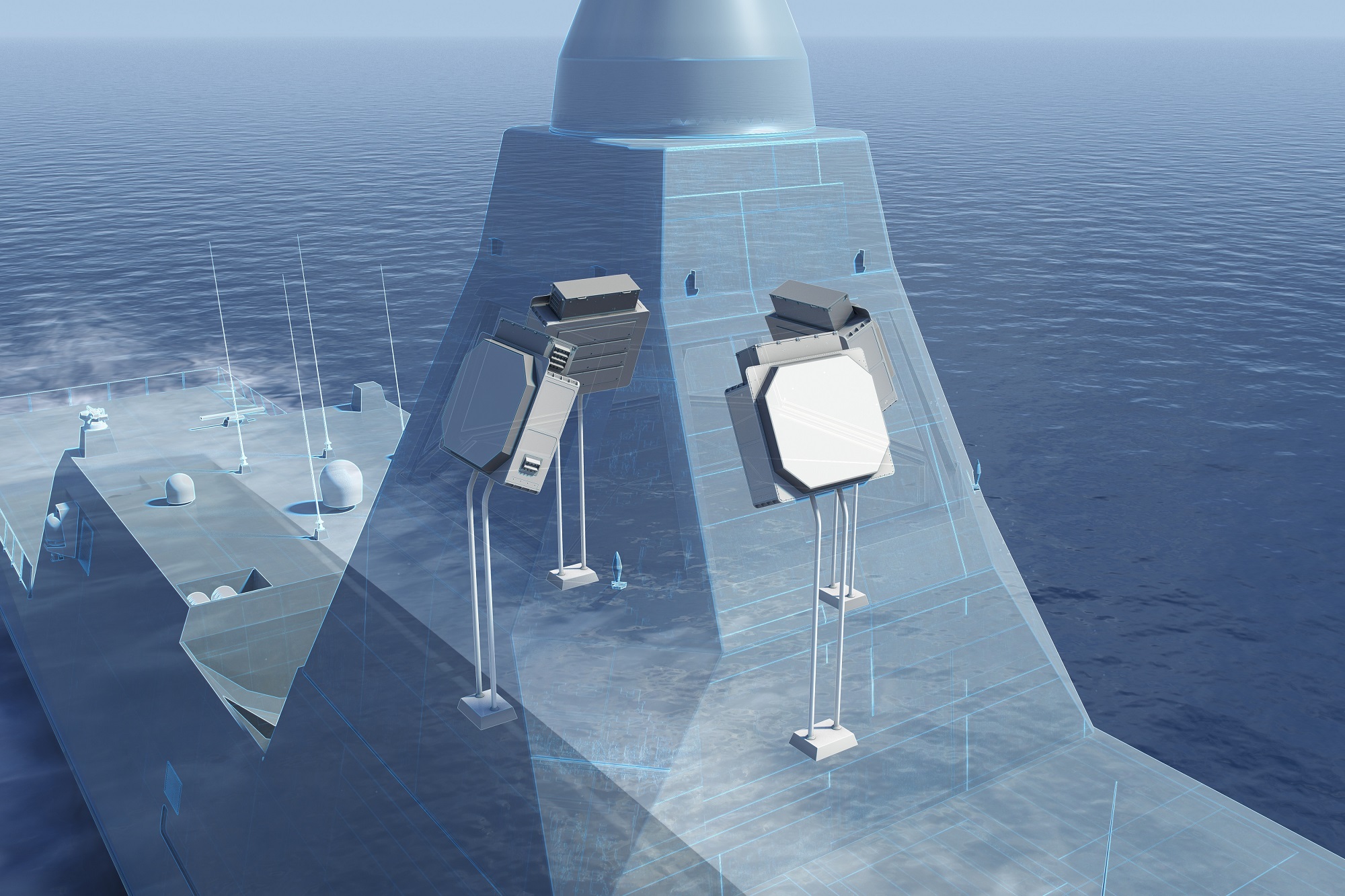 The Sea Fire is the world’s most capable compact 4D AESA Multi-Function Radar. (Image Credit: Thales)
The Sea Fire is the world’s most capable compact 4D AESA Multi-Function Radar. (Image Credit: Thales)
8. FLIR Systems is an American company that designs, manufactures, and distributes sensing technologies such as thermal imaging, visible-light imaging, measurement and diagnostic devices, and advanced threat detection systems. It was founded in 1978 and is headquartered in Wilsonville, Oregon. As of 2022, FLIR Systems generated a total revenue of approximately $2 billion. Teledyne FLIR LLC is a subsidiary of Teledyne Technologies and was formerly known as FLIR Systems Inc. It has since expanded globally, with operations in more than 100 countries. Some of the robotics, unmanned, and next-generation tech-type products of FLIR Systems include:
• Black Hornet is a UAV designed for reconnaissance and surveillance missions. It is equipped with FLIR cameras and other sensors that provide real-time video and imagery to the operator. The Black Hornet is used by military forces, law enforcement agencies, and other organizations around the world.
• Ground-Based Sense and Avoid (GBSAA) system is designed to prevent collisions between UAVs and other aircraft. It uses a combination of sensors, including FLIR cameras, to detect and track nearby aircraft. When a potential collision is detected, the GBSAA system alerts the UAV operator and guides them to avoid the other aircraft.
• Saros is a next-generation security camera system that incorporates advanced thermal imaging and artificial intelligence (AI) to detect potential threats in real time. The system is designed for outdoor use and can operate in all weather conditions. It is capable of detecting people, vehicles, and other objects at distances of up to 100 meters. Saros is used by businesses, government agencies, and other organizations to enhance security and surveillance.
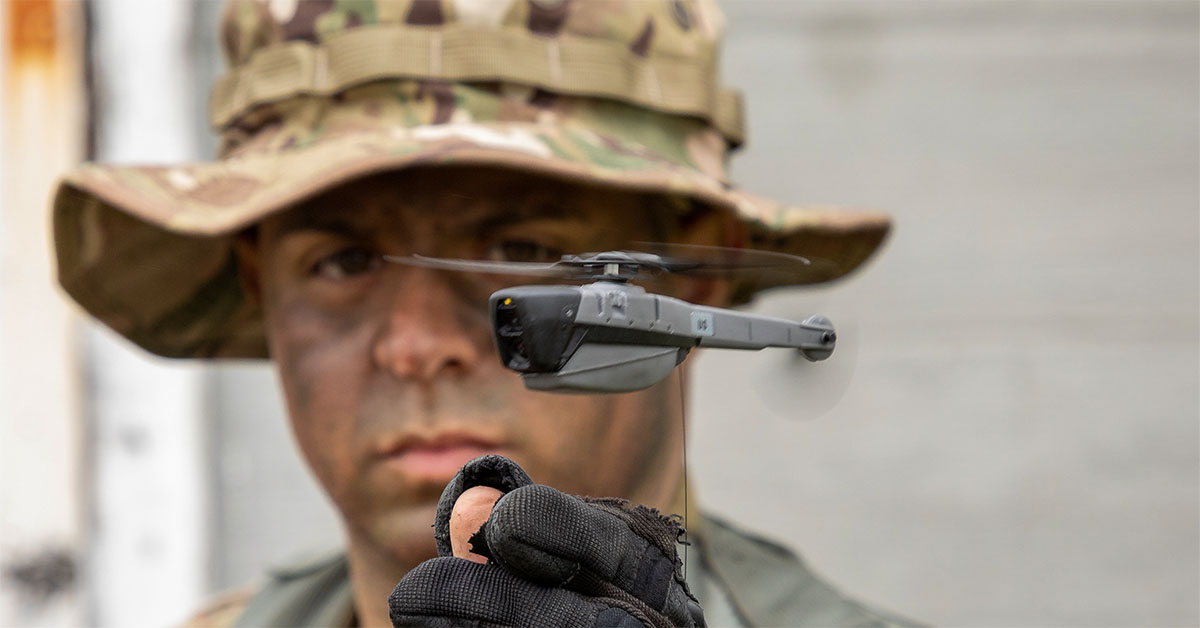 FLIR Black Hornet Personal Reconnaissance Systems. (Image Credit: FLIR)
FLIR Black Hornet Personal Reconnaissance Systems. (Image Credit: FLIR)
9. QinetiQ is a British multinational defense technology company that specializes in research and development, technical consulting, and technology-based services. QinetiQ’s revenue for the year 2022 was approximately $1.73 billion. The company employs around 6,000 people worldwide.
The company is a top supplier of unmanned air, land, and surface targets that are utilized for live-fire training and weapons system testing purposes. In addition to defense technology, QinetiQ also offers technology solutions for commercial customers. The company’s customers include aerospace, energy, and transportation companies. Recognized for its innovative technology solutions, QinetiQ has received numerous awards for its work in defense technology and technical consulting. These are some of QinetiQ’s notable products:
• TALON is a lightweight unmanned ground vehicle (UGV) designed for explosive ordnance disposal (EOD) and other hazardous duty operations. It can be equipped with various payloads such as cameras, sensors, and manipulator arms. TALON is also used for reconnaissance and surveillance missions.
• The Autonomous Systems Service Suite (AS3) is a software suite developed by QinetiQ for controlling and managing unmanned systems. It provides a user-friendly interface that enables operators to control multiple unmanned systems simultaneously and receive real-time data and video feeds.
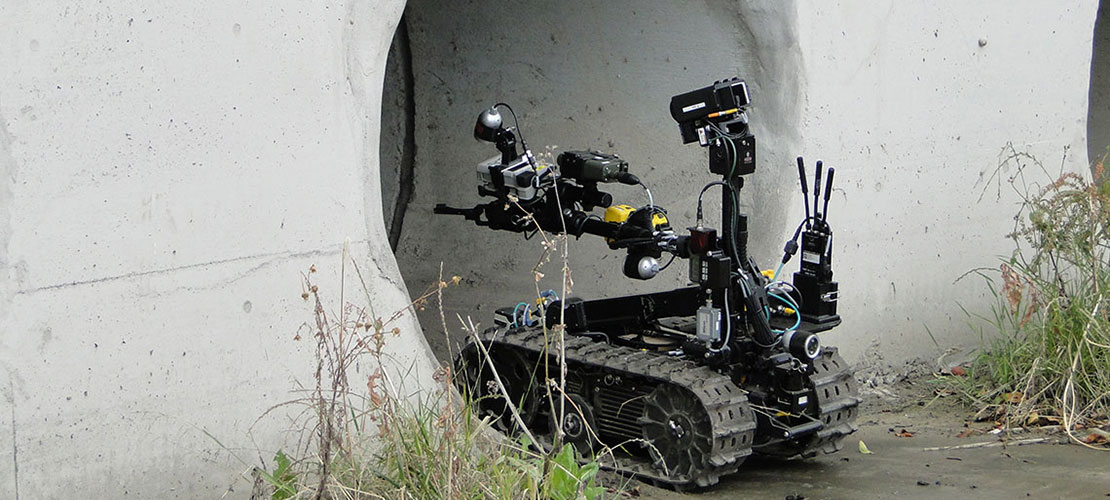 A Talon robot is one of the models in the SFPD robot lineup. (Image Credit: QinetiQ)
A Talon robot is one of the models in the SFPD robot lineup. (Image Credit: QinetiQ)
• QinetiQ’s REVA is an unmanned aerial system (UAS) designed for intelligence, surveillance, and reconnaissance (ISR) missions. It can be equipped with various sensors and payloads, including electro-optical and infrared sensors, laser designators, and communications relays.
• Obsidian is a small UAV designed for aerial reconnaissance and surveillance missions. It is equipped with a high-resolution electro-optical and infrared camera and can operate for up to 45 minutes.
• Dragon Runner is a small UGV designed for reconnaissance, surveillance, and target acquisition missions. It can be loaded with various payloads, including cameras, sensors, and manipulator’s arms.
• Blackout is a system developed by QinetiQ to protect against unauthorized access to computer systems. It uses artificial intelligence to detect and respond to potential threats and prevent cyber-attacks.
• Talon HATE is a UAS designed for counter-improvised explosive device (C-IED) operations. It can be equipped with various payloads, including laser designators, infrared sensors, and high-resolution cameras.
• Titan is an unmanned ground vehicle (UGV) designed for hazardous duty operations. It can be equipped with various payloads, including manipulator arms, sensors, and cameras. Titan is also used for reconnaissance and surveillance missions.
• Paramarine is a software suite developed by QinetiQ for naval architecture and marine engineering. It is used in the design and analysis of ships and submarines, as well as in the development of marine equipment and systems.
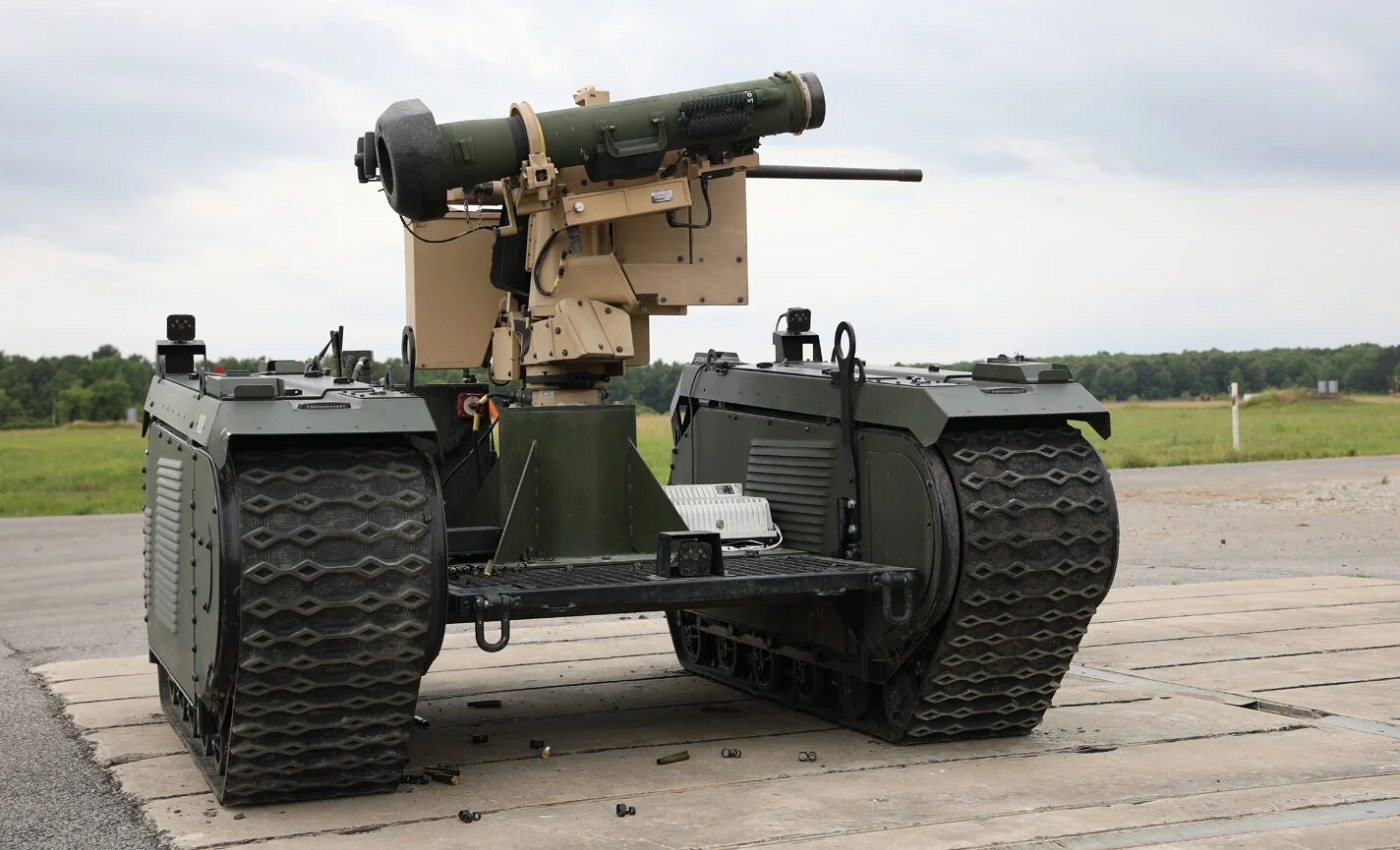 QinetiQ Titan robot fitted with a Javelin anti-tank missile launcher. (Image Credit: QinetiQ/BreakingDefense)
QinetiQ Titan robot fitted with a Javelin anti-tank missile launcher. (Image Credit: QinetiQ/BreakingDefense)
10. AeroVironment is an American technology company specializing in charging and testing systems for unmanned aerial vehicles (UAS) and electric vehicles (EV). The company was founded in 1971 by Paul MacCready, an aeronautical engineer known for his work on human-powered aircraft. AeroVironment is headquartered in Simi Valley, California, and has more than 1,000 employees.
AeroVironment’s products include small drones for military surveillance and reconnaissance, as well as larger drones for cargo transport and agricultural monitoring. In 2022, AeroVironment’s total revenue was $430.7 million. The company remains a leader in the UAS and EV industry and is known for its innovative technology and commitment to sustainability. The company’s unmanned aerial vehicle systems are used in a variety of applications, including military, commercial, and industrial applications. AeroVironment’s UAS are known for their reliability, durability, and advanced technology. Some of its prominent products are:
• RQ-11B Raven is a small hand-launched UAV that provides real-time reconnaissance, surveillance, and target acquisition for military personnel.
• Puma AE is a small UAV that is ideal for intelligence, surveillance, and reconnaissance (ISR) missions.
• Switchblade is a tactical missile system that provides a rapid, precision strike capability for use against targets on land or at sea.
• Quantix is an unmanned aircraft system that provides automated, high-resolution mapping and image analysis for commercial agriculture applications.
• PosiCharge is a line of high-speed EV charging systems that can provide a full charge in as little as 20 minutes, making it ideal for fleet operations and public charging stations.
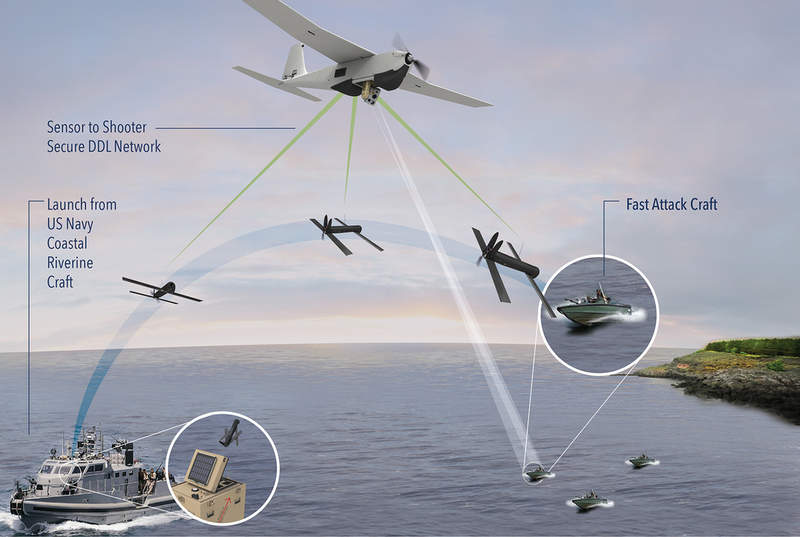 AeroVironment’s Puma AE small UAS combined with automatic coordinate transmission to the battle-proven Switchblade lethal loitering missile. (Image Credit: Business Wire)
AeroVironment’s Puma AE small UAS combined with automatic coordinate transmission to the battle-proven Switchblade lethal loitering missile. (Image Credit: Business Wire)
Benefits of Robotics Technology in Military Applications
• Robots can perform dangerous tasks that are too risky for human soldiers, such as defusing bombs and reconnaissance in hazardous areas, reducing the risk of injury and death for soldiers in combat situations.
• Robots can be used for intelligence, surveillance, and reconnaissance operations to gather precise and critical information about the battlefield without putting human lives at risk.
• Tasks performed by robots can provide greater flexibility, increased efficiency, and speed in military operations. Robots can operate for extended periods, providing sustained support and endurance for military operations.
• The use of robotic systems enables accurate targeting and delivery of firepower, minimizing the risk of unintended harm to civilians and collateral damage.
By integrating robotics technology into military applications, countries can potentially decrease their overall military expenditure by reducing the number of personnel and resources which can lead to reduced expenses for the training, equipping, and supporting of human soldiers.
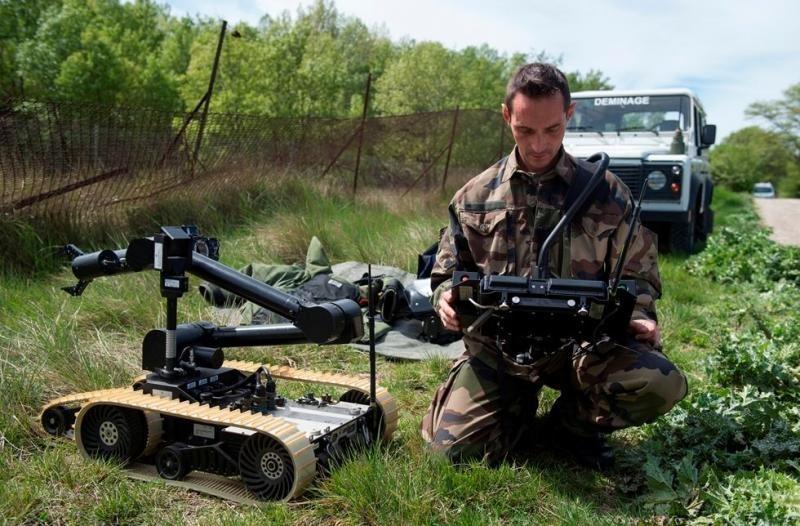 Cameleon E unmanned ground vehicle. (Image Credit: ECA Group)
Cameleon E unmanned ground vehicle. (Image Credit: ECA Group)
Overall, incorporating robotics technology into military applications can help boost mission success rates, minimize risks to human life, and offer a cost-effective and efficient approach to address diverse military challenges and improve operations.
Contributor: Nida Rauf, Edited by: IRIA Staff
All correspondence should be addressed to editor@ir-ia.com
ALSO READ:
Regions
Issues

















